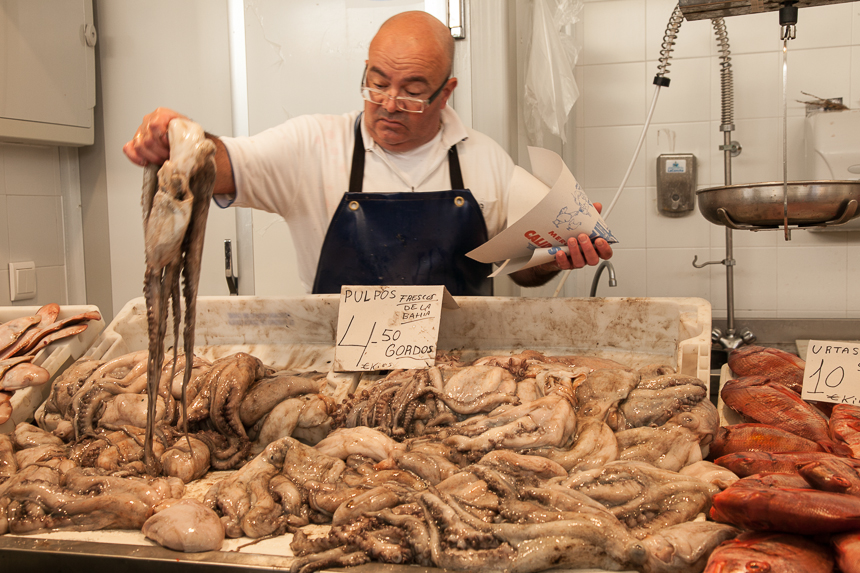 This strange looking creature has always fascinated me. I can’t decide if it looks pre historic or futuristic. It’s a mysterious creature. Underwater it is really quite beautiful, with its long flowing arms trailing elegantly behind as it shoots itself forward, and its ability to wrap itself around rocks and completely camouflage itself. But out of the water, well, it doesn’t look very attractive. There are plenty of people who couldnt be paid enough to put a piece of octopus in their mouth but they probably aren’t people who live around the Mediterranean. Around here, ugly as it is, this is a delicacy and I for one love it.
This strange looking creature has always fascinated me. I can’t decide if it looks pre historic or futuristic. It’s a mysterious creature. Underwater it is really quite beautiful, with its long flowing arms trailing elegantly behind as it shoots itself forward, and its ability to wrap itself around rocks and completely camouflage itself. But out of the water, well, it doesn’t look very attractive. There are plenty of people who couldnt be paid enough to put a piece of octopus in their mouth but they probably aren’t people who live around the Mediterranean. Around here, ugly as it is, this is a delicacy and I for one love it.
Octopus hasn’t only got its bizarre looks going against it. It’s also a real pain to cook. It’s a tough beast and requires a specific process to make it tender and edible. The time honoured way is to pound it with a mallet or a stick or whack it agains rocks. I actually did it once, sitting on the front steps of our house in Israel. All I remember is that it was really hard work and horribly messy. I can’t even remember the results. I just remember vowing never to do it again.
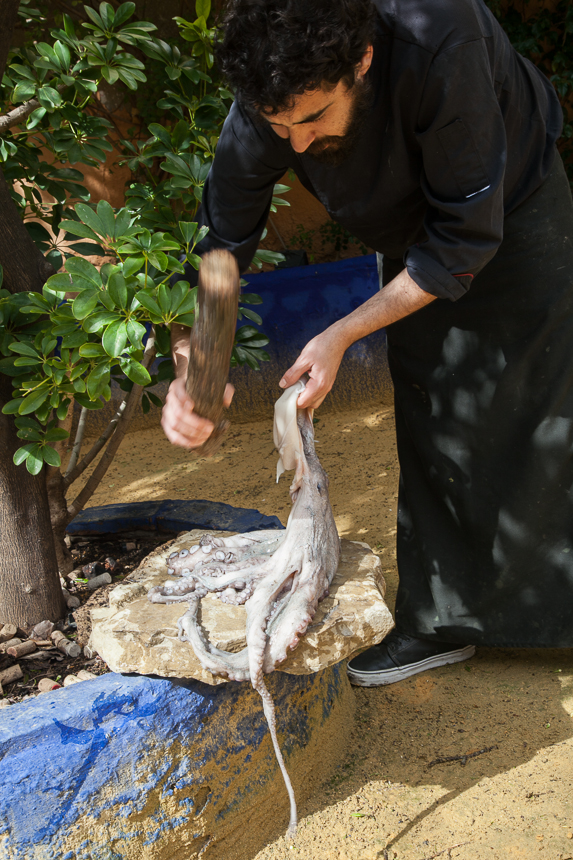
But now I am living in Spain where ‘pulpo’ is plentiful and delicious and I’m tempted to try again. There are so many myths about cooking this thing ranging from putting corks into the water, adding vinegar, adding salt, not adding salt, boiling it for 5 hours, baking rather than boiling it… the list goes on. I decided to find out once and for all and spent a morning with David in the kitchen of his lovely restaurant El Arriate as he took me through the process from start to finish. To my surprise, it turns out to be quite simple. Forget the mallet. The first thing you do is to throw the whole thing straight into the freezer. Two weeks in there and the muscle breaks down and when you thaw it, its virtually ready for the pot. Virtually…not quite. First it needs to be cleaned. There’s a kind of gelatinous coating that needs to come off. I watched David get rid of it quite painlessly by rubbing each tentacle with coarse salt. Then, a good rinse under the tap and you are ready to go.
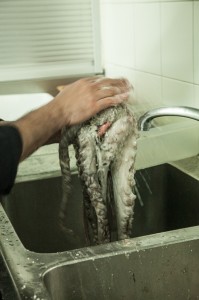
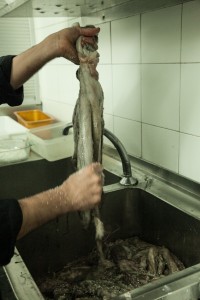
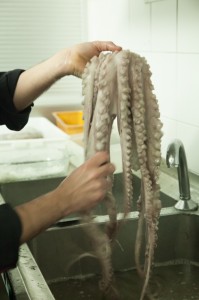
Whether it’s another octopus myth or not, David swears by cooking it in a copper pot and dipping it three times in the boiling salted water before dropping it in. The copper pot certainly looks good .
Once it’s boiling away there’s not much left to do but let it cook. It can take anything from half an hour to 45 minutes, depending on the size. You can test to see if it’s ready with a skewer. There should be a very slight resistance but not too much. When it’s done, you take it out and let it cool. It’s cooked. And it should be completely tender.
But some proven facts about octopi which I never knew before is that they have three hearts, that the male octopus’s third right arm is also his sexual organ and is detachable (!), that the arms aren’t tentacles – they are arms, that their eggs are really delicious, and that the Koreans eat the tiny octopuses live and wriggling.
But here in Spain, the classic way to serve pulpo is a la gallega, which is simply cooked octopus pieces served on a bed of sliced boiled potato, with a healthy sprinkling of pimenton (a mixture of hot and ‘sweet’), a few good glugs of olive oil, and some coarse salt. Delicious!
In El Arriate however, David generally makes it a la plancha – with a fast but dramatic searing.
It seems that once you get past the initial cooking the possibilities are endless and now that I have renewed courage to tackle one of these impresive creatures, I am going to start to experiment. Anyone got a big copper pot they can spare?
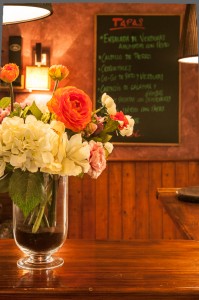
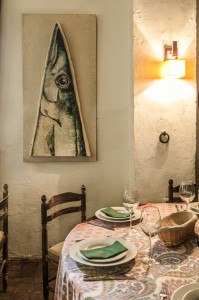
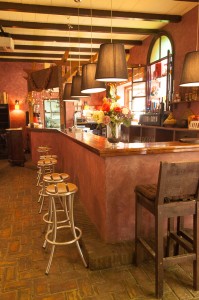
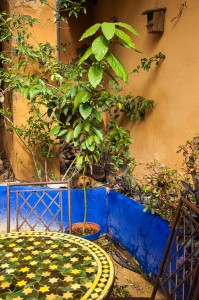
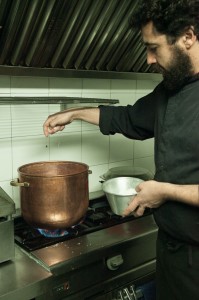
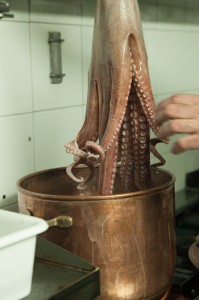
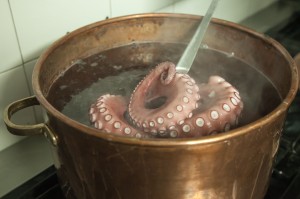
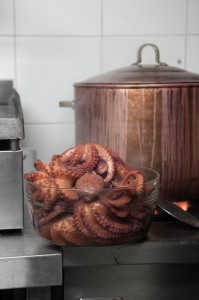

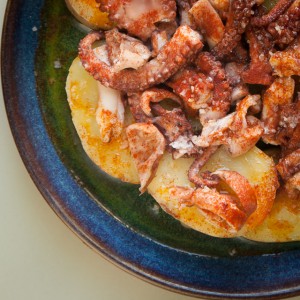
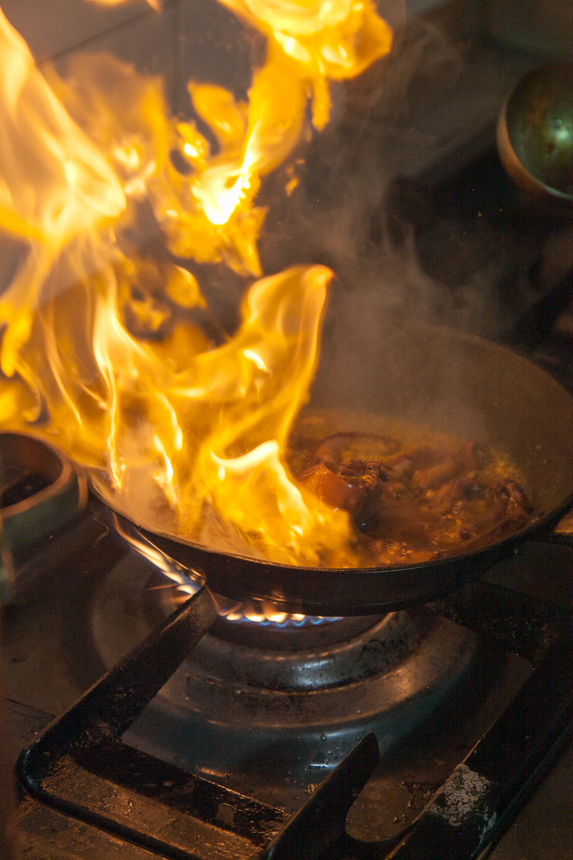
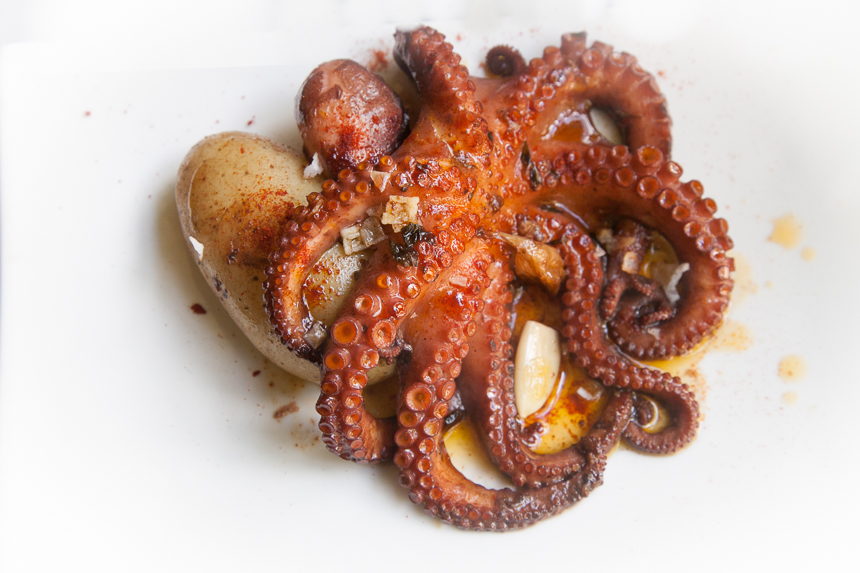
gidon says
very good…..I’ll have some next time I’m in town.
Love u
Sharon says
I think we could arrange that. Will you clean it for me??
Joyce says
interesting article but you will never get me to eat that stuff!!
Sharon says
No, Joyce, I know, but then again if you were here in Spain…you never know!
Néstor octavi says
sorprendente, con tus reportajes aprendemos mucho. Las fotos son excelentes, la última del pulpo emplatado es una joya. Por cierto Sharon, no sabia que uno de sus tentáculos es órgano sexual, creo que la próxima vez seré mas cuidadoso en su manipulación, me encanta el pulpo, y un truco que utilizo, es espolverear el pimentón picante y dulce, ( los dos de la Vera) en el aceite y añadir la mezcla cuando el pulpo está calentito, y queda bien rico.
El Chef y el restaurante deben ser muy buenos. Nunca he ido allí pero me gustaría.
Sharon says
Pues Nestor, vamos al restaurante juntos – y pronto!!
Phil says
Another great post, Sharon. The detachable sexual organ is an interesting design feature. Maybe it’ll catch on.
Sharon says
I know..just think of the possibilities. You could probably even get to change them from time to time…!
Diana Baird says
A very intriguing article, Sharon, and great photos. I had no idea what was involved in preparing octopus, but you have demystified it! Thanks for sharing.
Diana Jones says
Hi Sharon
Hola de la amiga de Eleanor! estoy a Cadiz!
Your photographs are ‘delicious’ and I loved reading about your attempts at cooking octopus- and the unknown, to me, facts about them
It would be wonderful to perhaps meet for a coffee. if you have the time contact me at my email address. I am in school from 9- 2 weekdays. Other than that I am free.
anna silkoff says
great writing! Wonderful photos…nearly threw up reading about them tho..until I came to the detachable part….my mind is racing.
gidon says
Just to make things clear, after the males gives up his arm to the female, she stores it in her mantle and will use it once she lays her eggs. The male will die shortly after. So no second chance, and no new penis… oh…and she will die shortly after laying her eggs. Its a short life for Octupi and sex kills them.
anna silkoff says
pretty like us humans.
AUXI says
hola querida, soy Auxi, la amiga de Concha y Luis…que reportaje tan maravilloso..tanto gastronómica como fotográficamente hablando…descubrimos en algunas fotos…detalles que no vemos cuando tenemos el pulpo en las manos